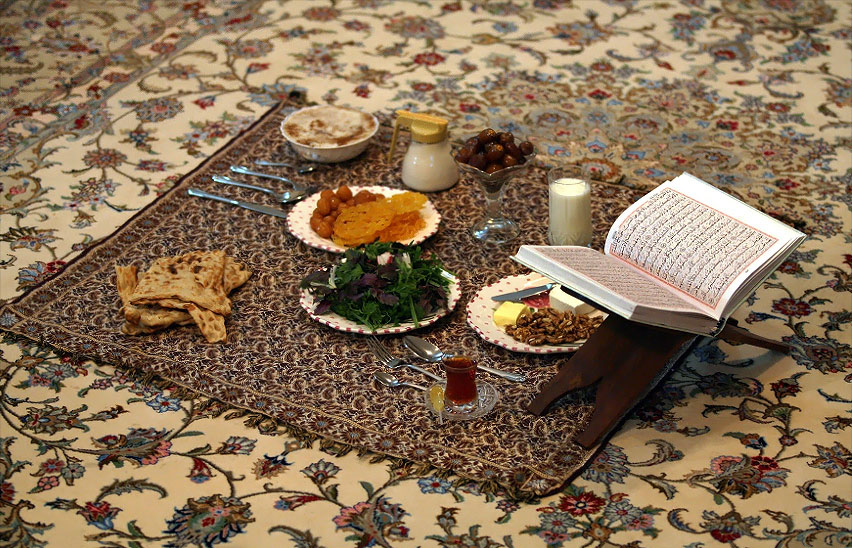Sufra on:
[Wikipedia]
[Google]
[Amazon]
 A ''sufra'', ''sofra'', or ''sofreh'' ( ar, سُفْرَة; fa, سفره; tr, sofra; ka, სუფრა) is a cloth or table for the serving of food, or, in an extended sense, a kind of meal, associated with
A ''sufra'', ''sofra'', or ''sofreh'' ( ar, سُفْرَة; fa, سفره; tr, sofra; ka, სუფრა) is a cloth or table for the serving of food, or, in an extended sense, a kind of meal, associated with
 A ''sufra'', ''sofra'', or ''sofreh'' ( ar, سُفْرَة; fa, سفره; tr, sofra; ka, სუფრა) is a cloth or table for the serving of food, or, in an extended sense, a kind of meal, associated with
A ''sufra'', ''sofra'', or ''sofreh'' ( ar, سُفْرَة; fa, سفره; tr, sofra; ka, სუფრა) is a cloth or table for the serving of food, or, in an extended sense, a kind of meal, associated with Islamicate
Marshall Goodwin Simms Hodgson (April 11, 1922 – June 10, 1968), was an Islamic studies academic and a world historian at the University of Chicago. He was chairman of the interdisciplinary Committee on Social Thought in Chicago.
Works
Though he ...
culture.
Forms of the ''sufra''
The word comes from theSemitic root
The roots of verbs and most nouns in the Semitic languages are characterized as a sequence of consonants or " radicals" (hence the term consonantal root). Such abstract consonantal roots are used in the formation of actual words by adding the vowel ...
''s-f-r'', associated with sweeping motions and with journeys (also giving rise to the word borrowed into English as ''safari''). According to E. W. Lane's '' Arabic-English Lexicon'', the basic meaning of the word was 'the food of the traveller', 'food that is prepared for the traveller ... or for a journey'.Edward William Lane, ''An Arabic-English Lexicon'', vols 6-8 ed. Stanley Lane-Poole, 8 vols (London, 1863-93), I 1371.
However, the term also referred to a kind of bag in which a traveller would carry food: this traditionally comprised a circular piece of skin or cloth, with a drawstring running round the circumference. Food could be placed in the middle and the drawstring pulled to create a bag in which to carry the food. When it was time to eat, the bag could be placed on the ground and the drawstring released, creating a surface from which to eat the food.
By extension, the word also came to mean a platter (of wood or metal) from which food could be served, or even simply a dining table.
Islamic tradition has it that the Prophet customarily ate from a ''sufra'', with his right hand, while seated on the floor, and eating in this way has at times been seen as a good practice for Muslims. Traditional family dining in Iran and Afghanistan involves a ''sufra'' (known in Afghanistan as a ''disterkha'') in the form of a mat placed on the floor or a carpet. By extension, the term can refer to a meal with religious significance at which women gather and pray in both Iran and Afghanistan. ''Sufra'' can refer to a ritual meal among Shiite Muslims and Zoroastrians in Iran too. In Khazakhstan the ''sufra'' takes the form of a tablecloth on a low, round table, and is known as a ''dastarkhan'',''Encyclopedia of Women & Islamic Cultures: Family, Body, Sexuality and Health'', ed. by Afsaneh Najmabadi and Suad Joseph (Leiden: Brill, 2003), III 109-11. and Pakistan ''dastarkhawn''. The ''sofra'' is also an important ritual meal to members of the sufi Bektashi
The Bektashi Order; sq, Tarikati Bektashi; tr, Bektaşi or Bektashism is an Islamic Sufi mystic movement originating in the 13th-century. It is named after the Anatolian saint Haji Bektash Wali (d. 1271). The community is currently led by ...
order. In Ṣafawid Persia
Safavid Iran or Safavid Persia (), also referred to as the Safavid Empire, '. was one of the greatest Iranian empires after the 7th-century Muslim conquest of Persia, which was ruled from 1501 to 1736 by the Safavid dynasty. It is often conside ...
, around the seventeenth century CE, one of the official roles in the royal kitchen was the ''sufrači-bāshī'', in charge of arranging the cloth ''sufra'' on the floor.
The ''sufra'' has given its name to a Muslim-run community food scheme in the London borough of Brent, founded in 2013.''Austerity, Community Action, and the Future of Citizenship'', ed. by Shana Cohen, Christina Fuhr, and Jan-Jonathan Bock (Policy Press, 2018), p. 270, .
References
{{reflist Meals Religious food and drink Islamic terminology Serving and dining